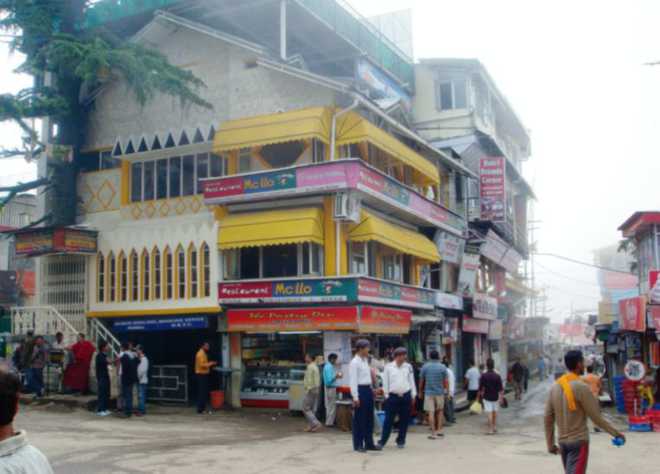Raaja Bhasin
Unlike the acquisition of the Shimla tract and the steady over-layering of British influence in the surrounding hill states, the story of Kangra under the colonial rule and the creation of the town of Dharamsala is somewhat different.
In the Shimla area, when the ‘Gurkha Wars’ of 1815-16 came to an end, except some pockets that were retained by the British, almost all territories were returned to their original rulers. The ancestral rulers of the broader Kangra tract expected something similar to happen at various points in the 19th century, but here the British annexed the entire region, leaving the rajas of the area disappointed and often disaffected.
During the reign of Raja Sansar Chand (1765-1823), this age-old kingdom had succumbed to the expansion of Punjab under Maharaja Ranjit Singh. Sansar Chand, who was arguably a great ruler in more ways than one, was compelled to pass his final years in the shadow of his former glory. At the end of the Anglo-Sikh wars of the 1840s, Kangra was taken over by the British and the entire territory between the Sutlej and the Ravi, except the Jaswan valley, was constituted into an administrative division. Initially, Kot Kangra (Kangra Fort) was planned as the capital of the district, as it was already garrisoned. The plan was abandoned, as there was insufficient land for the civil station and the lower areas around, with their rice paddies, were considered to be too hot and unhealthy. This was when Dharamsala was chosen as the district capital in March 1855.
At the time, today’s town of Dharamsala just had a ‘dharamshala’ and the rest was an empty stretch along the lower reaches of the Dhauladhar slopes. Gradually, structures began taking shape and administrative offices began filling the pocket. In terms of size, with an area of over 9,000 square miles in 1881, Kangra became one of the largest districts in British India. And besides other pockets, it broadly comprised of today’s districts of Kangra, Hamirpur, Kullu and Lahaul and Spiti. The district was under the Commissioner of Jalandhar (Jullundur) division; an Additional Commissioner assisted him in judicial matters. The executive staff of the district was, at least theoretically, assisted by the Rajas of Lambagraon, Guler, Siba, Kutlehr and Nadaun; these rulers also had magisterial powers within their ‘jagirs’.
McLeodganj takes its name from Sir Donald Friell McLeod, Lieutenant-Governor of Punjab (1865-1870). This was a thriving colonial retreat by the end of the nineteenth century. Much of McLeodganj’s colonial past — barring a few houses, the cemetery, the Church of St. John in the wilderness and the obelisk dedicated to the Viceroy, Lord Elgin — has been swallowed up by the passing years. The topography of this pocket of Kangra has had much to do with the history of these twin towns and in the way they grew. Dharamsala lies along the lower edges of a steep slope and McLeodganj takes the heights along the same set of hills. These two pockets are connected by Forsytheganj, which, in turn, has been named after a one-time Commissioner of Punjab. While the lower part of the hill developed administrative infrastructure and grew to have a substantial military presence, the upper part, McLeodganj, with its pleasanter climate and terrain, became more of a retreat. Dotted along the hill, McLeodganj soon had several large bungalows in the rises and the dips. Most of these belonged to the tea-plantation owners of Kangra and officers of the government, judiciary and the army. There were a few princes too like the Raja of Lambagraon, which was the ‘jagir’ village of the rulers of Kangra; once the British had taken over the area.
Nowrojee and Son
Somewhat dilapidated, but still standing, at the start of McLeodganj’s bazaar is the general merchandise shop of Nowrojee and Son. The Great Uprising of 1857 had come to an end when Nowrojee’s ancestors moved up from Punjab to McLeodganj in 1860 with the British army. As the station steadily grew for close to a century, this establishment was the primary purveyor of a variety of goods to the residents of the area. NN Nowrojee, who passed away in 2000, belonged to the fifth generation. With the end of the colonial rule in 1947, many of the area’s European residents emigrated and most left the charge of their properties with the man they had grown to trust and like. For a couple of decades, Nowrojee kept watch over the estates and large bungalows in his charge and was often called the ‘unofficial custodian of McLeodganj’.
The Dalai Lama’s arrival
When the Dalai Lama came to India, he began searching for a place for himself and his people. Seeing something fall into place, Nowrojee wrote to the Prime Minister, Jawaharlal Nehru, and offered the vast estates he was looking after. Received by Nowrojee, the Dalai Lama himself came to inspect the place in 1960 and, as we know, approved it. It was this moment that carried the McLeodganj of today to the world map.
(The writer is an author, historian and journalist)
Unlock Exclusive Insights with The Tribune Premium
Take your experience further with Premium access.
Thought-provoking Opinions, Expert Analysis, In-depth Insights and other Member Only Benefits
Already a Member? Sign In Now











